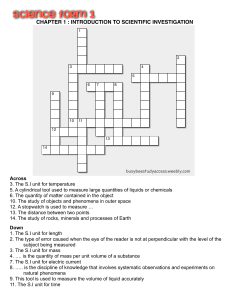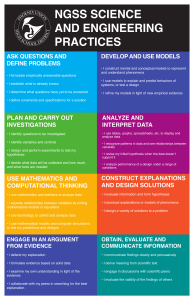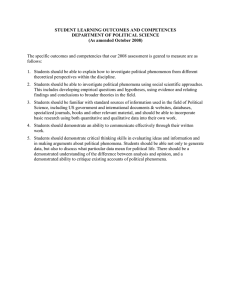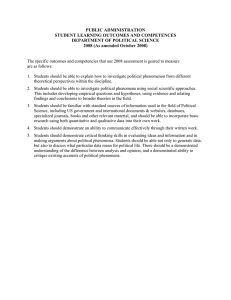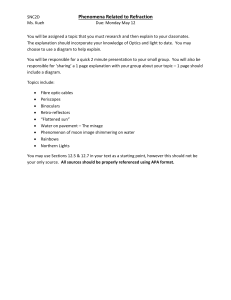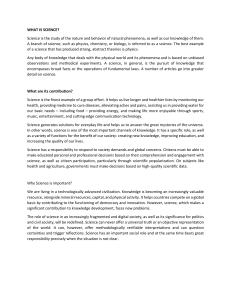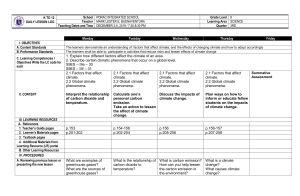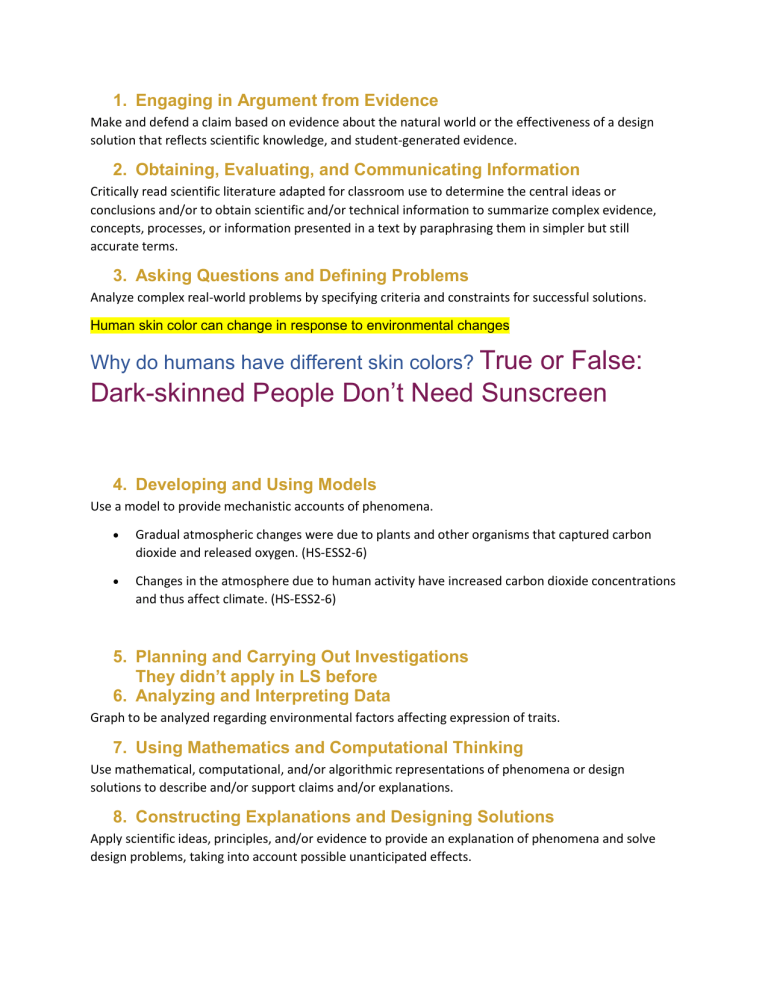
1. Engaging in Argument from Evidence Make and defend a claim based on evidence about the natural world or the effectiveness of a design solution that reflects scientific knowledge, and student-generated evidence. 2. Obtaining, Evaluating, and Communicating Information Critically read scientific literature adapted for classroom use to determine the central ideas or conclusions and/or to obtain scientific and/or technical information to summarize complex evidence, concepts, processes, or information presented in a text by paraphrasing them in simpler but still accurate terms. 3. Asking Questions and Defining Problems Analyze complex real-world problems by specifying criteria and constraints for successful solutions. Human skin color can change in response to environmental changes Why do humans have different skin colors? True or False: Dark-skinned People Don’t Need Sunscreen 4. Developing and Using Models Use a model to provide mechanistic accounts of phenomena. Gradual atmospheric changes were due to plants and other organisms that captured carbon dioxide and released oxygen. (HS-ESS2-6) Changes in the atmosphere due to human activity have increased carbon dioxide concentrations and thus affect climate. (HS-ESS2-6) 5. Planning and Carrying Out Investigations They didn’t apply in LS before 6. Analyzing and Interpreting Data Graph to be analyzed regarding environmental factors affecting expression of traits. 7. Using Mathematics and Computational Thinking Use mathematical, computational, and/or algorithmic representations of phenomena or design solutions to describe and/or support claims and/or explanations. 8. Constructing Explanations and Designing Solutions Apply scientific ideas, principles, and/or evidence to provide an explanation of phenomena and solve design problems, taking into account possible unanticipated effects.

